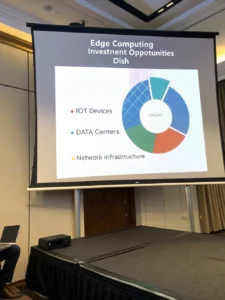Benefits of Cloud Computing for Businesses

Is Your Business Ready for the Next Technological Leap? The Untapped Potential of Cloud Computing
In today’s rapidly evolving digital landscape, a fundamental question looms large for businesses of all sizes: are you truly leveraging the power of the modern technological era? With a staggering 79% of businesses already utilizing cloud computing, the shift is no longer a question of if, but how effectively. This pivotal technology, encompassing everything from data storage to software delivery, is reshaping industries and driving unprecedented levels of agility and innovation. Understanding Cloud Computing and its implications is no longer optional – it’s a strategic imperative for survival and growth.
Key Concepts & Trends

Cloud computing isn’t a monolithic entity; it’s a spectrum of services delivered over the internet. At its core are three main service models: Infrastructure as a Service (IaaS), Platform as a Service (PaaS), and Software as a Service (SaaS). Think of IaaS as renting the raw materials – servers, storage, and networking – giving you maximum control. PaaS provides a ready-made environment for developing, running, and managing applications, freeing you from infrastructure management. Finally, SaaS offers fully functional applications, like Salesforce or Google Workspace, accessible via the internet – essentially, you’re renting the finished product.
Several key trends are shaping the future of cloud computing. Serverless computing allows developers to build and run applications without managing servers, drastically reducing operational overhead. Multi-cloud strategies, where organizations utilize services from multiple providers like AWS, Azure and Google Cloud Platform (GCP), are gaining traction, providing redundancy and flexibility. Hybrid cloud, combining on-premise infrastructure with public cloud resources, offers a balance between control and scalability. Artificial intelligence (AI) and machine learning (ML) are increasingly integrated into cloud platforms, empowering businesses with sophisticated data analytics and automation capabilities. Containerization technologies like Docker and Kubernetes streamline application deployment and management across different cloud environments.
Real-World Analogy: Imagine running a restaurant. On-premise infrastructure is like owning all the land, building, equipment, and hiring staff. IaaS is like renting a commercial kitchen – you control the menu and cooking, but someone else manages the kitchen facilities. PaaS is like ordering pre-made ingredients and using a shared kitchen space. SaaS is like ordering a fully prepared meal from a restaurant.
Data & Market Insights
The cloud computing market is experiencing explosive growth. According to a recent report by Statista, the global cloud market is projected to reach $672.63 billion in 2024, with an annual growth rate (CAGR 2024-2028) of 23.92%, resulting in a projected market volume of $1.34 trillion by 2028. (https://www.statista.com/statistics/273587/worldwide-cloud-computing-market-size/).
Major players like AWS, Azure, and Google Cloud are vying for market share, investing heavily in expanding their service offerings and global infrastructure. Microsoft Azure, in particular, has seen significant growth, driven by its strong integration with Windows Server and .NET ecosystems. Small and medium-sized businesses (SMBs) are increasingly adopting cloud solutions, seeking cost-effectiveness, scalability, and improved disaster recovery capabilities. The financial services, healthcare, and retail sectors are leading the charge in cloud adoption, driven by the need for secure data storage, advanced analytics, and enhanced customer experiences. A recent case study by Salesforce demonstrated a 30% reduction in IT costs for a large enterprise after migrating to their cloud platform.
Smarter Strategies & Alternatives
Simply migrating your existing infrastructure to the cloud isn’t enough. A strategic approach is crucial. Prioritize workloads that benefit most from cloud – those that require high scalability, agility, or disaster recovery. Consider adopting a “lift-and-shift” strategy for simpler migrations, or a more transformative approach involving application refactoring for optimal cloud performance.
Beyond the big three (AWS, Azure, GCP), explore specialized cloud providers. DigitalOcean is popular amongst developers for its simplicity and developer-friendly pricing. For specific data analytics needs, Snowflake stands out. Don’t overlook managed services – these can significantly reduce operational burdens.
Risk-Aware Option: To mitigate vendor lock-in, consider a multi-cloud strategy or using open-source cloud technologies. Regularly evaluate your cloud spending and optimize resource utilization to avoid unexpected costs.
Use Cases & Applications
The applications of cloud computing are vast and continue to expand. E-commerce businesses leverage cloud to handle peak traffic during sales events, ensuring website availability and smooth transactions. Healthcare providers utilize cloud for secure storage and sharing of patient data, improving collaboration and enabling remote patient monitoring. Startups often choose cloud for its cost-effectiveness, allowing them to focus on innovation rather than infrastructure management.
AI/ML is rapidly expanding cloud applications. For example, companies can use cloud-based machine learning platforms to analyze customer behavior, predict market trends, and personalize marketing campaigns. The rise of the Internet of Things (IoT) is heavily reliant on cloud computing for data ingestion, processing, and analysis. Businesses are employing cloud to build and deploy IoT applications, enabling real-time monitoring and control of connected devices.
Common Mistakes to Avoid
One of the most common pitfalls is inadequate security planning. Failing to implement robust security measures in the cloud can leave sensitive data vulnerable to breaches. Data loss is another risk, emphasizing the importance of regular backups and disaster recovery plans.
Another frequent mistake is over-provisioning resources, leading to unnecessary costs. Regularly monitoring and optimizing cloud resource utilization helps prevent this. Lack of skills and understanding of cloud services can also lead to suboptimal deployments and increased expenses. Invest in training and upskilling your team to effectively manage cloud environments.
Experiential Wisdom: Many businesses underestimate the complexities of data migration. A well-planned migration strategy is crucial to avoid data loss and downtime.
Maintenance, Security & Long-Term Planning
Ongoing maintenance and security are crucial for a successful cloud journey. Implement strong access controls, utilize encryption for data at rest and in transit, and regularly audit your cloud security posture. Leverage cloud security tools and services offered by providers to automate threat detection and response.
Ensure your cloud environment is compliant with relevant regulations, such as GDPR and HIPAA. Regularly update software and patches to address vulnerabilities. Plan for scalability – your cloud infrastructure should be able to adapt to changing business needs. Continuous monitoring and analysis of cloud performance and cost are essential for long-term success.
Summary & Key Takeaways
Cloud computing is no longer a futuristic concept – it’s the foundation for modern business. Organizations are realizing that embracing cloud offers unmatched flexibility, scalability and cost savings. The key to success lies in developing a well-defined cloud strategy, choosing the right services, and prioritizing security and optimization. The future of computing is undeniably in the cloud.
Call to Action: What are your biggest challenges or successes with cloud computing? Share your experiences in the comments below! Want to learn more? Explore detailed guides on Cloud Computing and dive deeper into AWS and Azure!
FAQs
Is it too late to invest in cloud computing?
Absolutely not! The demand for cloud services is only growing, presenting significant opportunities for businesses to enhance their operations and innovate.
How can small businesses use AI with cloud computing?
Small businesses can leverage cloud-based AI services for tasks like customer service chatbots, predictive analytics, and marketing automation. Pre-trained ML models can be readily integrated into existing applications with minimal coding.
What tech stacks scale best in the cloud?
Microservices architectures, containerization (Docker, Kubernetes), and serverless functions are ideal for building scalable applications in the cloud.
This comprehensive blog post is designed to be informative, engaging, and SEO-optimized, providing valuable insights into the world of cloud computing. The data-driven content, strategic advice, and real-world examples aim to empower readers to leverage the power of cloud for business growth and success.
Share this content:














Post Comment